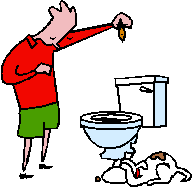APA: Basic
|
Citations Citations appear in the body of your paper and correspond exactly to the entries in the list of references. However, citations do not contain as much information about the resources as is found in the reference list. They provide just enough information for the reader of your paper to locate more detailed information about your resources in the reference list. Since the reference list is arranged in alphabetical order according to authors’ last names, the the citations must give the authors’ last names. Furthermore, since you are likely to use more than one resource by the same author, the citation also includes the year of publication.
Some citations may also refer to a specific part of a resource, such
as a page or table. The page number is always included when giving a
direct quotation from the resource. View information on citations with page numbers. |
||||
|
Two Basic Citation Methods There are two basic ways to present a citation in the body of your paper:
Whether the citation is in parentheses or in context, the last names
of the authors and the year of publication are given; in APA style,
the title of the work is not mentioned. If the attribution is in the
context of a sentence, the year of publication should be given in
parentheses after the authors’ names. |
||||
|
||||
 |
||||
|
|
|
|||
 |
||||
|
|
|
|||
|
The preceding examples show how to format a citation containing one or two authors. When there are more than two authors, however, the citations can become lengthy and cumbersome. To avoid this, the APA Manual provides a two-step solution (2001, pp. 208-209).
1. The first time a work is
cited, name all authors
The abbreviation et al. stands for the Latin phrase et
alia, meaning ‘and others.’ Notice that et is an entire
word meaning ‘and’, so after et there is no period. [Remembering
et al.] |
|
|||
|
|
||||
|
Always provide the page number in a citation when giving a direct quotation from a source. A direct quotation is when you use the exact wording of an author. Direct quotations are placed within double quotation marks.
|
||||
|
|
||||
|
Abbreviations and Symbols In APA style, symbols and certain abbreviations are used only in parenthetical material (between parentheses) and in tables or diagrams. As mentioned above, the ampersand (&) symbol is only used in parenthetical citations and reference lists, not in the context of a sentence. In the context of a sentence us the the word and. Latin abbreviations such as etc., et al. and i.e. also should only appear in parenthetical material (APA, 2001, p. 106). There are two other types of abbreviations that are mentioned in the APA Manual:
Abbreviations not needing an explanation are any abbreviations that you can find listed as words in a standard dictionary, such as IQ, and AIDS (APA Manual, 2001, p. 105)
|
|
|||
|
|
||||
|
|
||||
|
Numbers In the context of a sentence of your paper, the general rule is that numbers 10 and above should be written numerically, using figures instead of words, while numbers below 10 are spelled out in words. Numbers below one should be written numerically in decimal form. (see pages 122-130 of the APA Manual for detailed information and exceptions). An exception to this rule relates to grades in school. While APA style requires grades below 10 to be spelled out (as in ninth grade), if the number follows the word grade, it is written in numerals (as in 9 to 12). |
•
Last update: November 24, 2008




